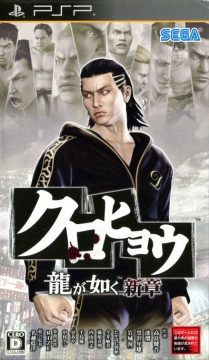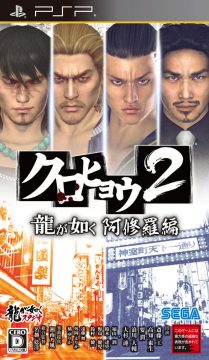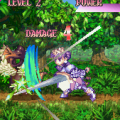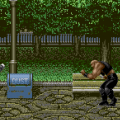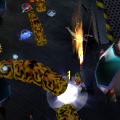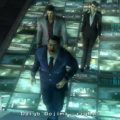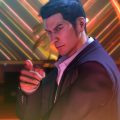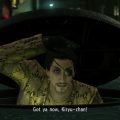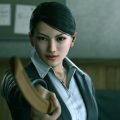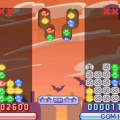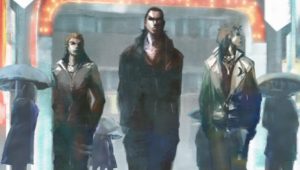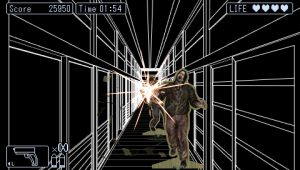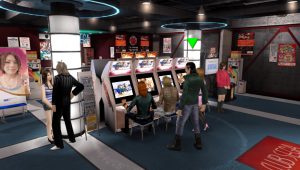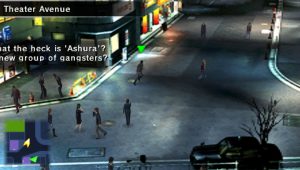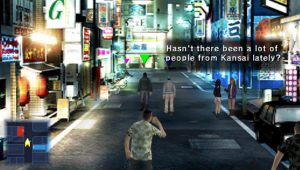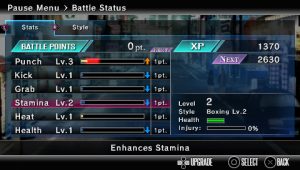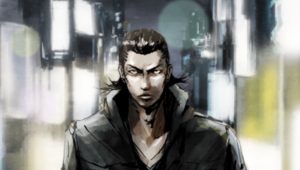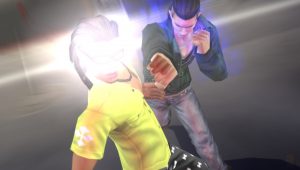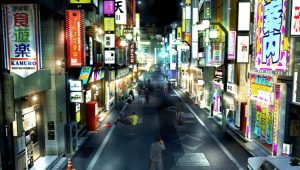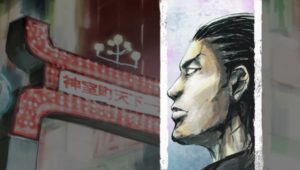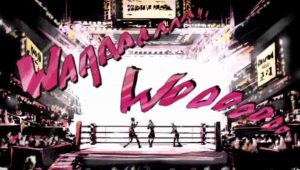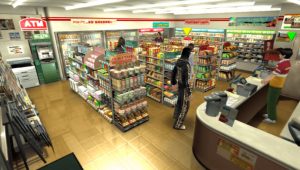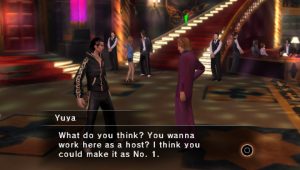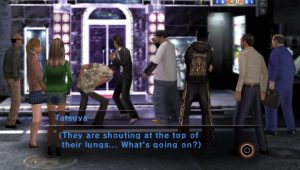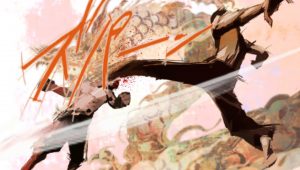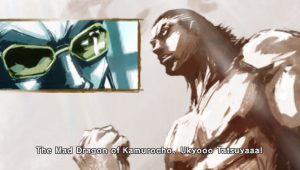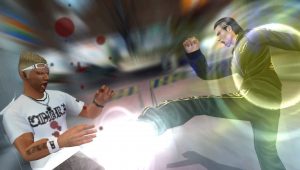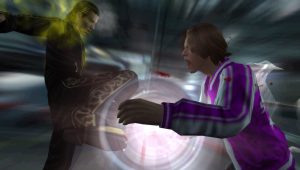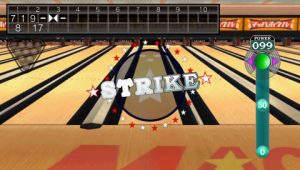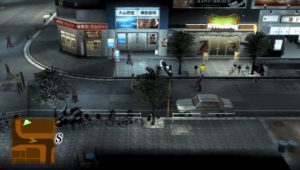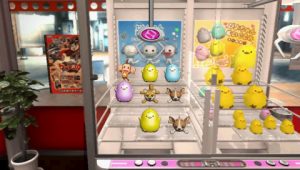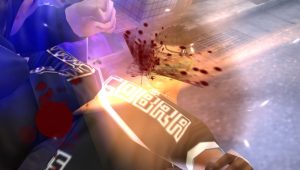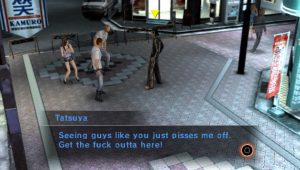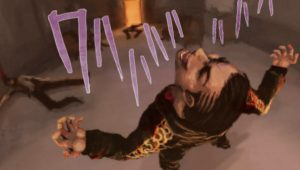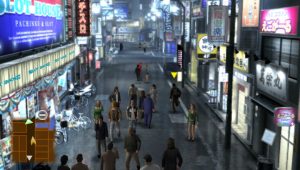Kurohyou: Ryu ga Gotoku Shinshou (クロヒョウ 龍が如く新章, “Black Panther: Like A Dragon New Chapter”) – PSP, Vita (2010)
Kurohyou 2: Ryu ga Gotoku Ashura Hen (クロヒョウ2 龍が如く 阿修羅編, “Black Panther: Like A Dragon Ashura Chapter”) – PSP, Vita (2012)
While Sega and the Like A Dragon people were working on consoles, they contacted a studio named Syn Sophia to work on a spin-off series. While they were known mainly as the Style Savvy people at this point in time, they were once known as AKI Corporation, and were responsible for countless pro wrestling games and the Def Jam series. They had what it took, and delivered an authentic Like A Dragon experience aimed for a younger audience. Ironically, they accomplished this with a far more violent protagonist – which might have more been an idea from the RGG people (Nagoshi is listed as the writer on Wikipedia, but there’s no source as of writing).
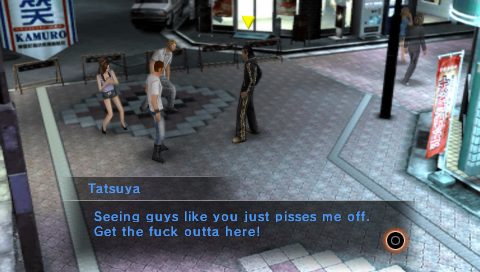
The series follows one Tatsuya Ukyo, a good for nothing punk who would normally be a random goon Kiryu would smash through in a random encounter, except he is freakishly talented at fighting. He picks up styles at the drop of a hat, and has a sadomasochist side to him that causes him to get a bit too caught up in fights (one of the battle themes is literally called “Your Knife Feels Good”). This causes a huge problem for him, as an attempt to bluff some free money from a local shady Chinese crime front via invoking the Tojo’s name instantly gets called out by a Tojo Clan man working there. Tatsuya ends up fighting is way through, gets way too caught up in it, absolutely trashes everyone, has himself an evil laugh…and then notices that the Tojo guy doesn’t seem to be alive anymore.
Oops!
One stun gun later, and Tatsuya is given an ultimatum by the family head – get a ten win streak in Dragon Heat, a famous underground fighting ring, or…well, you can probably figure the rest out. Good thing Tatsuya is good at fighting! The sequel takes place after this whole kerfuffle, with Tatsuya having managed to become a pro boxer, and a quick trip to Kamorocho has him discover that Dragon Heat is under threat of an Osakan group called Ashura, and gets involved to save the place that managed to save him from being Kiryu fodder.
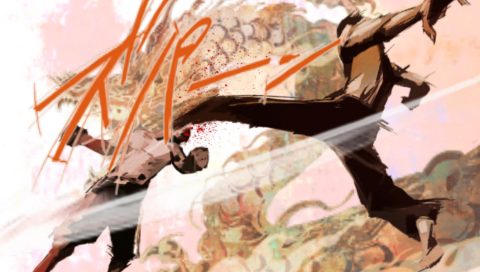
These Kurohyou games are genuinely really cool, but maybe a bit of a difficult sell for mainline series vets, because it has a very unique battle system. The battle system is mainly for small brawls, often just one on one slug fests. You might also notice there’s no health or heat bars, or that sometimes characters will start breathing heavily. This is because you have to watch character animations and details like their battle aura to have an idea of how they’re doing, the only other help being an icon in the corner that tells you what body part or area has been struck, to help you keep track of what has been damaged.
That’s right, your limbs have their own health. Tatsuya can get battered and bruised in a way that makes doing actions like guarding or moving harder – and the same goes for his opponents. You do have overall health, but the health of your limbs is far more important, because getting something too damaged starts limiting your performance. You also need to watch your battle aura to know when you have a heat move ready to use, or what level of power it will come out as. If you try to just beat your way through a fight, you’ll get winded and have to catch your breath, leaving you wide open. Thus, you actually have to watch your dodging and blocking, and decisions on what you do in fights have way more ramifications then they ever did in the Kiryu adventures.
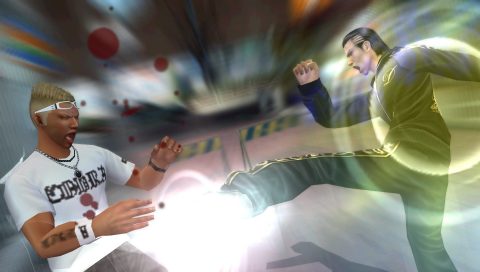
This makes the focus on coliseum matches for the big story beats make a lot more sense. Fights in this game just aren’t street brawls between Crime Men, but act as beats in Tatsuya’s arc and can also show aspects of our terrible feral boy by contrasting him with the wide range of personalities that meet him in the ring. With a battle system focused on more intimate violence, where every blow can have massive ramifications, you can work that idea into the gameplay itself, alongside classic substories and street fights. Heck, Tatsuya learning from fights outside that setting is a major part of his growth.
This further gets pushed by Tatsuya being able to “equip” a wide variety of styles, having about twenty or so over the series. He learns them mainly by fighting people with that style, and once he has them, he can upgrade them in a way similar to the job growth system in Yakuza: Like A Dragon ten years later. He can even modify his heat moves, and train to make them stronger. Fighting is not just a means to get from plot beat to plot beat in these games, but the entire point of them, people communicating through violence and growing through it.
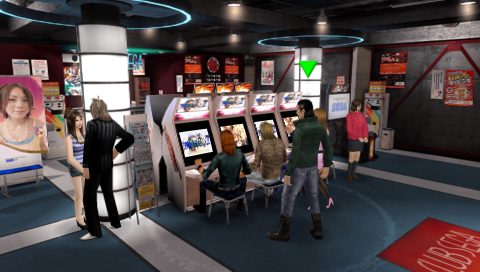
There are issues with that approach, though. The first is that fights can go on for a long while, to the point it can take up to thirty minutes to beat the super boss (which is, surprisingly, not a member of the Amon clan). The first game also sacrifices quality of life touches for verisimilitude, thus you having to go visit an old man who runs a dojo to level up base stats, which also costs money instead of experience. That is a problem early game, where one rando with an annoying style can have you limping for health and healing, which requires a lot of money you don’t get to have early on (it takes some time for part time jobs to unlock), and also limits your ability to level up stats since items and stats now have a shared resource pool. The sequel thankfully makes changes to address all this, like being able to level up your stats via a menu with experience points, like the rest of the franchise.
The structure is otherwise similar to mainline entries, with chapters and plenty of time to explore Kamorocho and take part in side activities. They’re toned down, of course, and in a charming way where you just explore screenshots of Yakuza 4 at set angles, similar to the PS2 era games, while all characters are 3D models. It’s got a vibe for sure, and it extends to minigames, using similar tricks to include stuff like bowling or crane games. The sequel also adds in a unique arcade game based around Dead Souls, but in a very charming, extremely early cabinet style where you shoot at cardboard cutouts in a simplistic black and white vector castle. Said game also has you traveling to Sotenbori, which makes sense, due to where the new antagonists come from. Oh, and needless to say at this point, we still have hostess clubs, with a surprise appearance by Akiyama in premium adventure mode as the guy Tatsuya has to out suave (good luck with that). This is admittedly weird, what with Tatsuya being seventeen in the first game, but…it’s here.
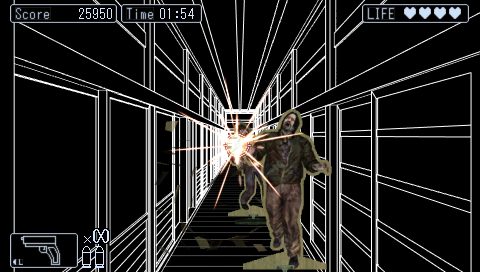
There was also some multiplayer parts to the game, which are probably quite hard to get going these days for obvious reasons. You could do missions to get stuff to customize yourself, which could be done with people you found online, or just brawl with strangers competitively. The huge swath of styles starts making a lot more sense with that bit of knowledge, as they effect not only stats and heat moves, but even your basic movements, stats, and performance. Therefore, everyone’s Tatsuya could be unique.
The character models are surprisingly expressive, even with the hardware limitations. It’s helped by some stylized exaggeration not really common in Like A Dragon designs anymore. The soundtrack is also quite strong in both games, complete with licensed tracks for main themes. The first game has RIZE’s Muppet, which certainly has…unique lyrics, but is clearly using English more as a style choice then to make literal descriptions. We win big in the sequel with Born To Be WILD by Shonan no Kaze, who we’ll be seeing a few more times. They turned in a blistering, energetic track that just makes you want to yell along with the chorus the moment it kicks up.
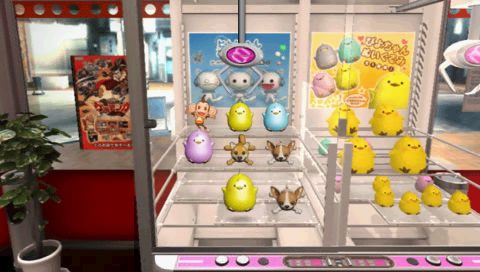
For in-game music, the first game sticks closer to the grungy noise of the PS2 era, with some solid boss themes for Dragon Heat fights, though none of them are major stand outs. The sequel has more focus on electronic music and hip-hop production, which serves it well, and has a few more stand out tracks. PANTHER IN THE STORM has a very strong start with a good initial hook, while nameless has a great rhythm and guitar work. It’s almost good enough to distract you from the fact it plays while you fight an assassin dressed in BDSM gear with a very clear bulge who makes a, um, specific face a lot.
Worth mentioning the game also solves the cutscene issue just like Metal Gear did with its PSP spin-offs. The games use motion comic cutscenes, with really stylish illustrations the models are trying to invoke, and they work wonders alongside the voice acting. They do go on for awhile, though, which presents a unique problem for a portable game. Of course, if you’re reading this, you’ll probably be playing via an emulator, which negates that problem.
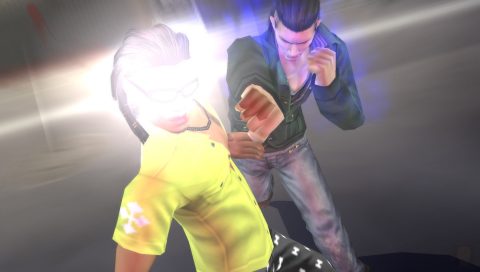
This subseries never left Japan, but fan translations have finally been finished, so there’s never been a better time to give the adventures of Tatsuya the Mad Dragon a shot. Just don’t come at them like you would a Kiryu adventure, and get ready for some drawn out brawls.
Worth mentioning both games got TV drama adaptations. They have a few story changes, and might be worth looking into if you can find sub versions floating around out there.
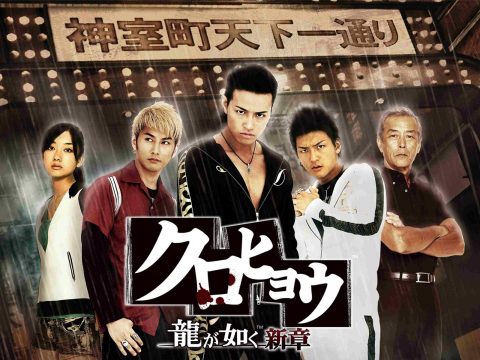
TV Drama Promo
Also worth mentioning between these two games saw another core team Like A Dragon release. What people were not expecting was this to be a game targeted at western markets where you shoot zombies.

